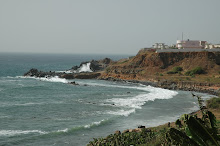
+of+DA+Playground.jpg)
+of+DA+Playground.jpg)
+of+DA+Playground.jpg)
+of+DA+Playground.jpg)
Reflections on life in Senegal

+of+DA+Playground.jpg)
+of+DA+Playground.jpg)
+of+DA+Playground.jpg)
+of+DA+Playground.jpg)


NASA photo showing a dust storm coming off the west coast of Mauritania. Dakar, Senegal, is the tiny "hook" at the end of the peninsula at the bottom of the picture.
For technical reasons that I cannot control, the picture is displayed here stretched wider than it should be. The correct proportions are shown in my December 23, 2008 post.
(Satellite image in public domain, from http://www.nasa.gov)